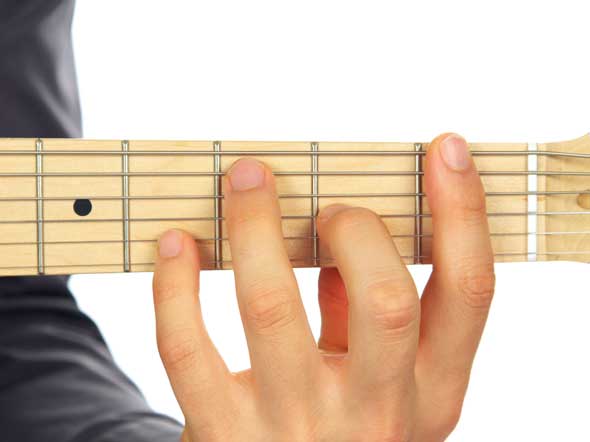
Dominant 7th Bar Chord (Root 6)

F7

The 7th chord can be formed by holding a root 6 major bar chord and moving the fourth finger to the second string, as shown in the photo. The F7 is a difficult chord to finger because of the stretch required to cover four frets, but as you move down the fretboard to Bb7 and C7 (see photo) the fingering becomes easier.


F7

* An alternative shape for the dominant 7th root 6 bar chord is:
* This chord shape is based on the alternative E7 chord introduced in Lesson Eleven.
The following example uses the root 6 major and seventh bar chords.
Rhythm Pattern




This 12 bar pattern substitutes the IV chord (Bb) in the second bar for the I chord (F). This is common practice that can be applied to all previous 12 Bar Blues to add variety. In bars 9 to 10 a passing chord principle is used. The basic progression is C to Bb, however the passing chord B is used on the last beat of the 9th bar. As a general rule, any two chords that are one tone apart can be connected by moving the chord shape in semitones. The passing chord will usually occur on only one beat, for example:
